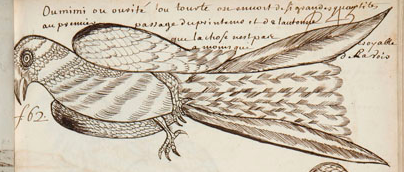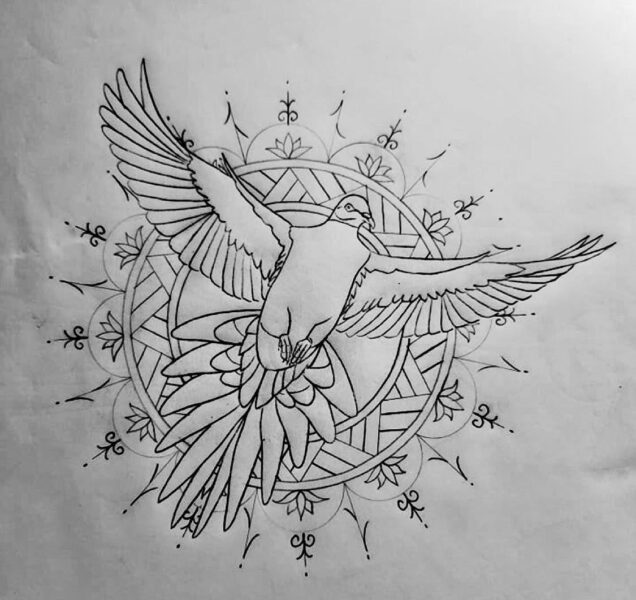Urí·ʔneh / Passenger Pigeon
The Urí·ʔneh / Passenger Pigeon was once a primary source of food for native people in the Southeast, it was similar in importance as the Bison to those on the great plains. For the Meherrin, it helped sustain them from the time of planting corn until harvest.
Before the Urí·ʔneh / Passenger Pigeon went extinct the Meherrin people would hold ceremony and give thanks to the pigeon and to the Creator for helping sustain life.
In the spring of the year the Meherrin would send out scouts to find large roosting populations of nesting pigeons. They would check on the age of the squabs (young pigeons) and if they were old enough, they would use long poles to knock them out of their nests. They would use blunt arrows in the evening to hunt adult pigeons roosting in the trees. They would collect the squabs and adult birds, which were eaten, boiled, smoked, or dried over a fire to preserve the meat
Meherrin people historically made cornbread by frying it in the fat of a bear or passenger pigeon, or by boiling in into a type of dumpling.
In another method, a small loaf or a round ‘pone’ would be put in the bottom of a large pot, a smaller pot was then placed upside-down over it and covered with hot coals. These early ways of making cornbread were later adapted by European settlers and became the basis of an important part of traditional southern cooking.
1700 Jesuit missionary Louis Nicolas’s account of the Passenger Pigeon.
The first European drawing of the species, in the Codex canadensis, was made by the Jesuit missionary Louis Nicolas in the early 1700s. He wrote a brief description of what he witnessed: “Oumimi, or ourité, or dove. One sees such great numbers of this bird at the first passage in spring and fall that it is incredible.”

1709 John Lawson’s account of the Passenger Pigeon in North Carolina.
John Lawson was the first European settler to explore the Carolinas and describe them in detail. Lawson, it turns out, left one of the best early descriptions of what those monstrous flocks of pigeons looked like in 1701, when Lawson wrote these words:
“In the meantime, we went to shoot Pigeons, which were so numerous in these Parts, that you might see many Millions in a Flock; they sometimes split off the Limbs of stout Oaks, and other Trees, upon which they roost o’ Nights. You may find several Indian Towns, of not above 17 Houses, that have more than 100 Gallons of Pigeons Oil, or Fat; they using it with Pulse, or Bread, as we do Butter, and making the Ground as white as a Sheet with their Dung. The Indians take a Light, and go among them in the Night, and bring away some thousands, killing them with long Poles, as they roost in the Trees. At this time of the Year, the Flocks, as they pass by, in great measure, obstruct the Light of the day.”

